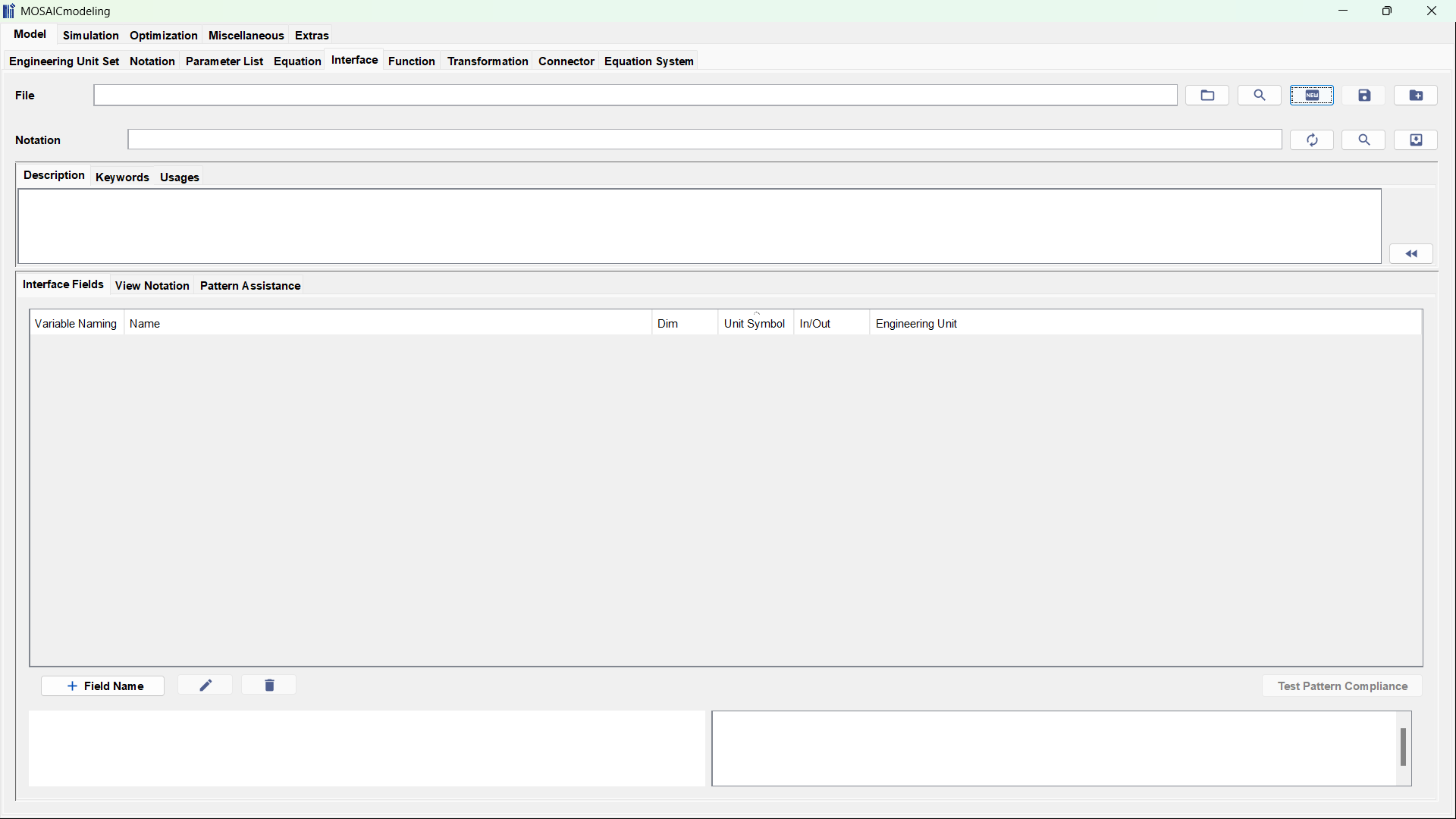Optional element
Modeling physical phenomena with descriptive equations also requires the use of well defined variable sets to make sure that the units within the equations are correct and to avoid errors. An Interface for a chemical engineering unit could contain the variables ![]() ,
, ![]() ,
, ![]() ,
, ![]() , and
, and ![]() . The notation for such an interface would explain
. The notation for such an interface would explain ![]() as molar feed stream,
as molar feed stream, ![]() as molar fraction of the composition (phase independent),
as molar fraction of the composition (phase independent), ![]() as pressure,
as pressure, ![]() as temperature, and
as temperature, and ![]() as vapor fraction.
as vapor fraction.
Purpose
Interfaces standardize communication between model elements, e.g., when
- connecting different process units via streams
- making calls to external functions
They define what information can be exchanged, specifically
- variable name
- description
- dimension (scalar or vector)
- direction (in or out or in/out)
- engineering unit
Note that they do not represent the actual external function, but only provide the interface. This is discussed further in functions.
Explanation of the editor
Figure 1 shows the interface editor whereas Table 1 explains the entries of the interface editor.

| Element | Explanation |
|---|---|
| File | Filename of your interface once you have saved or loaded it |
| Notation | Notation on which your interface is based |
| Description | Description of your interface, e.g., its purpose. A description is always necessary |
| Keywords | Optional keywords for your interface |
| Usages | Model elements, i.e., equations or functions, in which the interface is used |
| Interface fields | List of all variables that are known to the interface |
| View Notation | Overview of the symbols in the loaded notation |
| Pattern Assistance | Provides additional information on the use of the interface. For example, you can declare that this interface will be used for a function definition |
